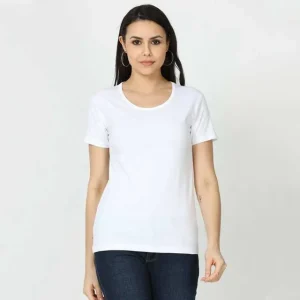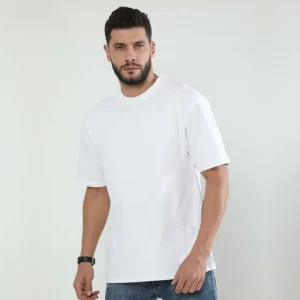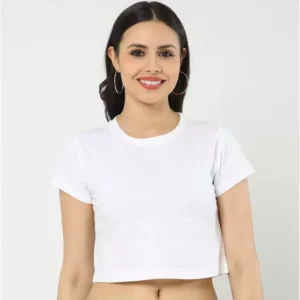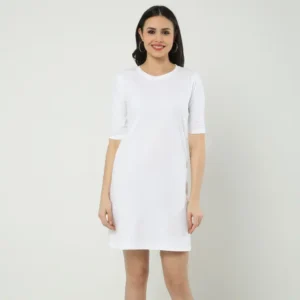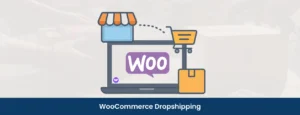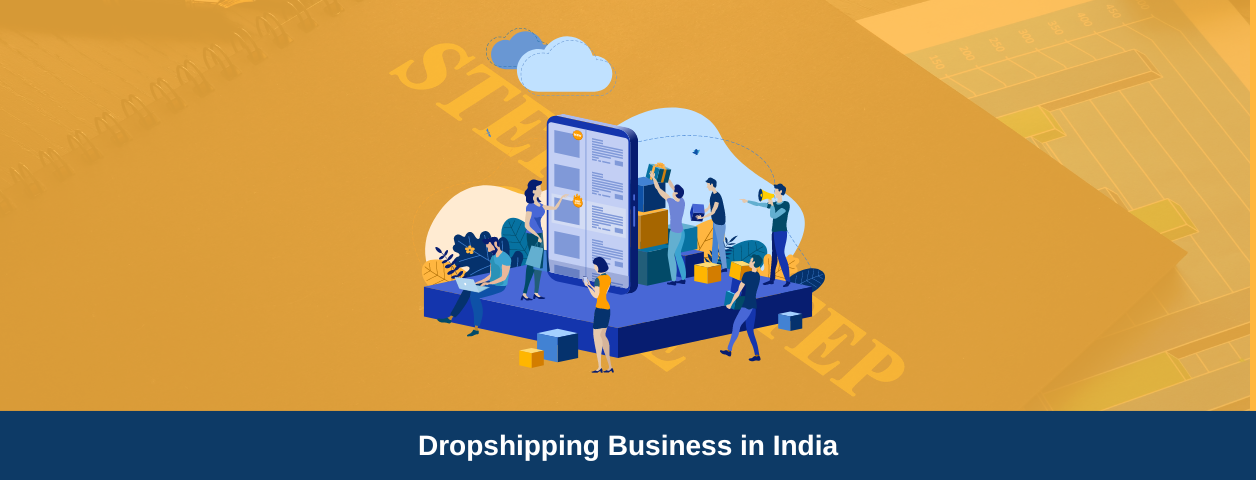As an entrepreneur or an experienced branding person in this customized apparel industry, you might have faced a head-or-tail situation whenever you need to select your printing method for your business. This debate will primarily focus on the comparison between traditional and modern techniques. The top printing methods are Direct-to-Garment (DTG) and Screen Printing.
In this blog, let’s explore both cases and scenarios to determine the most suitable printing method for your apparel industry business. We will also address the other doubts that arise in your mind, along with the characteristics and differences of those printing methods, in clear terms.
Key Takeaways:
- DTG printing specialises in the minute details in the designs and is perfect for colour complexity and small productions.
- Screen printing offers standard durability for your t-shirts and can have mass production runs.
- DTG favours cotton and its blends, while Screen printing offers a longer lifespan for your t-shirts.
- The future of garment printing methods has already been foreseen to include many technological and hybrid developments, with more yet to unfold.
Understanding of Garment Printing Methods
The world has witnessed a new wave of custom apparel throughout society, raising the question for commoners: ‘How come a design we see on the internet is printed on the clothes?’
Various techniques and technologies have developed over the years, including garment printing methods, which demonstrate the effects and types of Garment Printing Methods, as well as their durability, quality, and vibrant feel.
In today’s world, a variety of printing techniques and methods are available in the garment industry. Each has its own strengths and best-to-use scenarios. Some methods are better suited for large-scale production of clothes, while others can provide finer details in designs with smaller production quantities.
Whether you’re a brand owner or someone curious about how an excellent design evolved into a t-shirt, understanding these methods becomes necessary. Each method has its own advantages and is comparatively better or slightly lower than others. The two most commonly used printing techniques are Direct-to-Garment (DTG) and Screen Printing methods.
Choosing the best method that matches our situations and advantages is the best thing to do. This blog will help you settle the debate that is running in your mind about choosing between the DTG and Screen printing methods.
DTG Printing
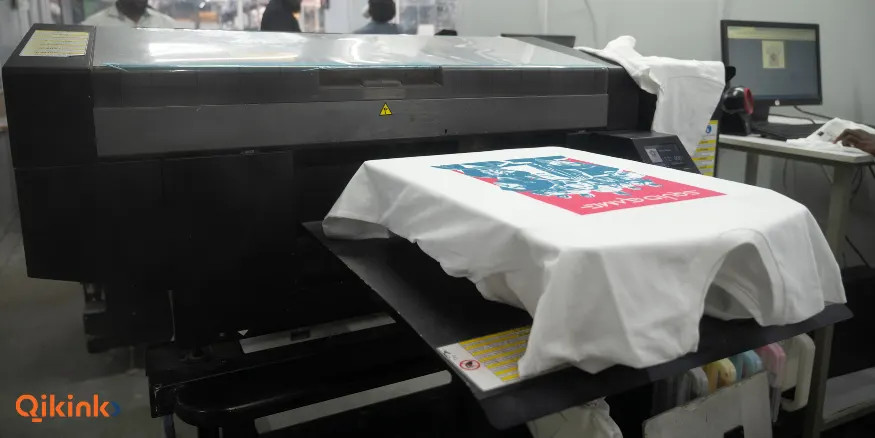
DTG (Direct-To-Garment) printing is a modern printing method that utilises inkjet printer technology, where specialised water-based inks are sprayed directly onto the fabric surface. The inks penetrate the fibres, producing a soft and detailed print.
That design will be embedded into the fibres of the T-shirts. Additionally, it involves the processes of the pretreatment (for dark-coloured garments) and heat-curing to ensure ink adhesion.
Unlike the other traditional methods, DTG does not require any stencils or screens. Instead, it can read a digital file and print the design instantly onto the fabric.
Screen Printing
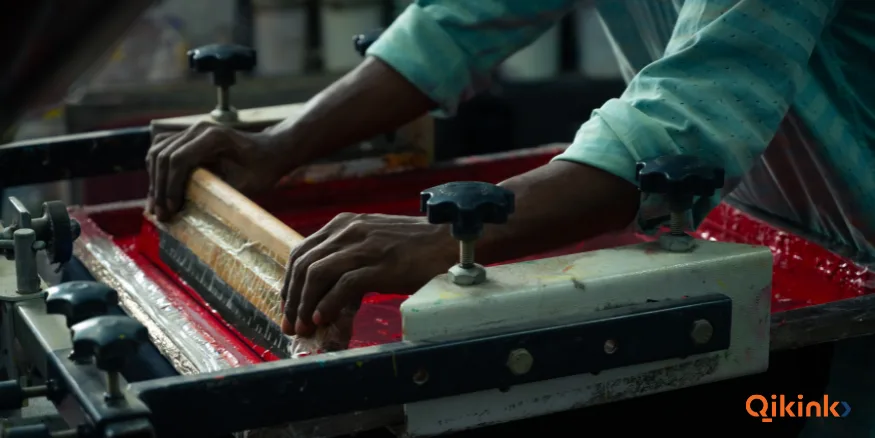
Screen printing, also known as silk screen printing, is considered one of the oldest and most widely used traditional printing methods. It is a process of creating a design in a stencil or screen, where ink is pushed through the mesh screen onto the fabric, layer by layer, to produce a final print. Each colour in the design requires a separate screen, which automatically makes this process require more workforce.
Over the years, several variations of screen printing have emerged, including puff printing for raised textures, foil printing for metallic finishes, discharge printing for soft, vintage looks, and vinyl-based screen printing for added durability and effects.
Unlike some inkjet printing methods, screen printing can print on almost anything, is scalable for large productions, and is bulk-friendly in production, allowing for the addition of special effects, and can also be cost-effective.
With Real Examples from Qikink!

Comparison Beyond the Basics
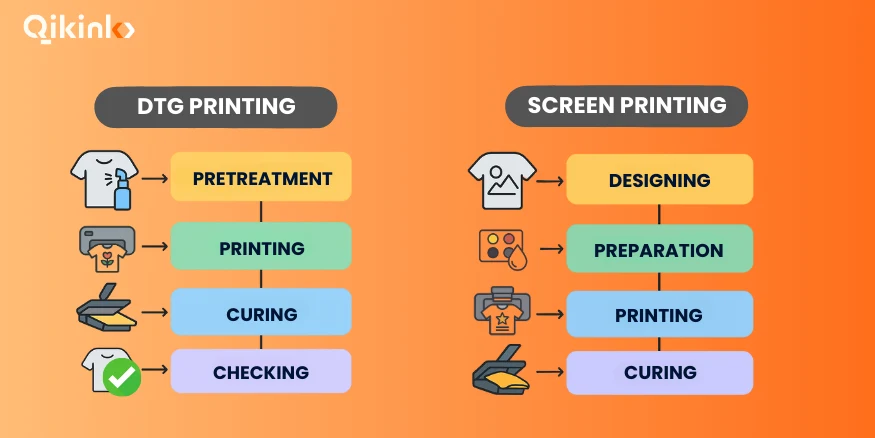
|
Factors
|
DTG Printing
|
Screen Printing
|
|---|---|---|
|
Best For
|
Smaller volume of runs, customized prints, E-commerce, premium or luxurious t-shirts.
|
Bulk quantity of runs, wholesale orders, uniforms of schools, promotional wears of any events or campaigns and exports.
|
|
Regional Popularity
|
Growing in metro cities and with the use of print on demand companies
|
Dominant in hubs, especially for wholesale and export.
|
|
Maintenance & Overheads
|
Machines require regular cleaning, climate control, and import of inks.
|
Low-volume presses and screens are designed to last for years and are easy to maintain.
|
|
Long-Term Business
|
For creative entrepreneurs and digital-first brands.
|
For established print shops and high-volume suppliers.
|
|
Scalability
|
An excellent choice for online print-on-demand businesses and niche fashion.
|
Extremely scalable, capable of handling thousands of shirts or t-shirts per day.
|
|
Design Trends & Order Size
|
Suited for art-driven and friendly brands with limited-edition drops, and can handle 50 unique designs easily.
|
Suited for mass volume of production, such as promotional events and uniform printing, and best for bulk orders with the same design.
|
|
Fabric Versatility
|
Works best on 100% cotton, struggles with polyester without special pretreatment.
|
Works on cotton, polyester, blends, silk, rayon, jute, and even non-textile materials (such as bags, caps, and boards).
|
|
Print Flexibility
|
Any number of colours at no extra cost. Realistic, photographic designs are also possible.
|
Each colour requires a new screen. Adaptable for simple designs, logos, and bold graphics.
|
|
Setup Cost
|
Only digital files and pretreatment costs are required; hence, the total setup cost is low.
|
Requires separate screens, emulsions, films, and alignment for every design or colour; thus, the setup cost is higher.
|
|
Maintenance Costs
|
DTG printers require regular cleaning, ink flushing, and careful handling; therefore, the cost of maintenance is high.
|
Screens and presses can last longer, and inks are easy to store and manage. The cost of maintenance will range from low to moderate.
|
These comparisons must have given a clear differentiation between DTG printing and screen printing. For further understanding of these printing methods, let’s look into some of the most essential characteristics of these methods.
1. Print Quality & Detail
DTG:

- DTG can virtually print unlimited colours, as it uses CMYK (Cyan, Magenta, Yellow, Black) water-based inks, along with white ink for printing on dark garments. This allows you to print any small, minute, or detailed designs perfectly, as well as real photographs.
- This printing method involves applying a liquid to the t-shirt and fusing it through a heating process. As a result, the ink embeds well into the fibres, and the design on the t-shirt feels smooth and looks natural.
- With its soft surface nature, most customers prefer this printing method for their T-shirts. Even with small production runs, it can achieve the quality of the design all the way to perfection.
Screen Printing:
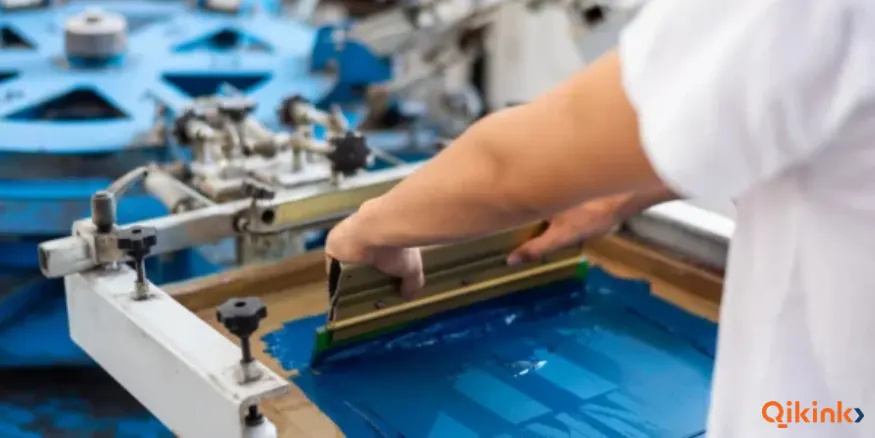
- Most commercial screen printers typically print a maximum of 8 colours per design and some high-end shops can push it 14 to 16 colours for complex designs.
- Screen printing is known for its boldness and vibrancy, in which it pushes thick layers of ink directly onto the garment, resulting in rich and solid colouring.
- It uses thick layers of ink, and hence the designs from screen printing have strong opacity and sharp edges, making them perfect for logos, text, and vector art designs.
- This method of printing can create special effects, such as textures, fluorescents, metallic, and puff inks.
2. Durability
DTG:
- The durability of DTG is high when blended with cotton; additionally, the pretreatment process is crucial, as it significantly determines its lifetime.
- Sometimes, it may be affected by gradual wear, as the ink soaks into the cotton fibres, and after excessive washing, it may start to fade.
- Customers are required to follow proper care for their custom printed T-shirts from DTG printing, such as washing in cold water and drying on a low setting.
Screen Printing:
- Durability is the primary factor that has enabled screen printing to dominate other printing methods. These prints are thick and have opaque layers of ink, which can withstand stretching, daily wear, and multiple washes.
- Plastisol ink is used in the screen printing method, where the ink adheres to the fabric’s surface, resulting in a long-lasting finish.
- This method is consistent for cotton, polymer, and cotton-blends. Even with exposure to sunlight, the screen-printed designs do not degrade.
3. Fabric Compatibility
DTG:
Women’s Classic T-Shirt | FC21
₹130.00
Crop Top | FC39
₹120.00
Unisex Sweatshirt | UH26
₹330.00
T-Shirt Dress | FC43
₹235.00
- Due to the use of water-based inks, this printing method requires the highest quality and type of garment, where the fibre can absorb and hold the ink.
- As previously stated, DTG has more durability when it is made from cotton or cotton-rich blends, because they have an absorbing nature that can hold the ink.
- Due to its fabric compatibility, it can be an eco-friendly method, utilising organic cotton’s natural fibres, which also contributes to its sustainability value.
Screen Printing:
- Screen printing is more versatile, offering a wider range of fabric choices and the primary advantage of accommodating bulk orders.
- This can handle both dark and light-coloured garments effectively, so you should choose the correct inks.
- The inks are applied directly to the surface of the garments, rather than relying on the fabric’s absorbency.
4. Eco-Friendliness
DTG:
- The usage of water-based inks, which don’t contain PVC, Phthalates or any plastisol inks, which are harmful chemicals.
- DTG avoids mass production, which reduces water consumption, inventory waste, and the use of chemicals.
- It also does not require the use of screen chemicals, emulsions, and solvents, which makes this method an eco-friendly one.
Screen Printing:
- The most common ink used in the screen printing method is plastisol, which contains PVC and phthalates, both of which are biodegradable and can be harmful if not disposed of properly.
- While it contains those chemicals in the inks, there are also new eco-friendly inks (such as discharge inks) for the screen printing method, which are available. Still, they require some additional conditions to work effectively.
- The water-based or discharge inks for screen printing penetrate the fabric and use only a few harmful chemicals.
5. Setup & Production
DTG:
- It requires a minimal setup, where you load the design, pretreat the garment, place it, and print, which is a fully automated process; the human resources needed are minimal.
- On average, DTG printing can take between 2 and 6 minutes per shirt or T-shirt, depending on the design type and the specific printing settings used.
- With this printing setup, it is possible to print different designs on multiple shirts without any additional setup, cost, or time spent.
Screen Printing:
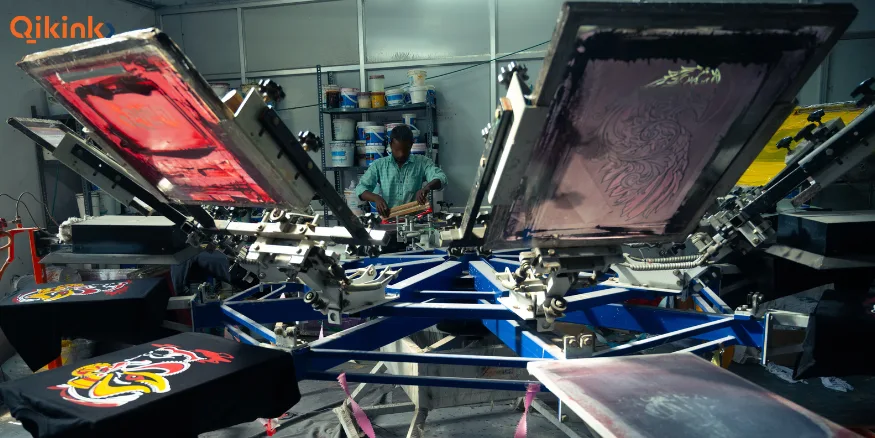
- Screen printing takes a longer time to set up, but provides an advantage in bulk production runs.
- The setup involves coating the screens, burning the design, washing the stencil and aligning the screens on the press.
- Preparing each colour can take nearly an hour, but once the setup is complete, even a manual press operator can print around 100 shirts or t-shirts per hour. With an automated press, the rate increases to approximately 1,000 shirts per hour.
6. Best Business Applications
DTG:
- By ordering a single piece through this method of printing, you can help test the quality for scaling before implementing it for a larger business with your customers.
- It helps significantly for on-demand purposes, local, customised shops. It can also be used as a personal gift, worn at a group party, or as t-shirts for a local sports team, thanks to its short and efficient production method.
- For brands that want to sell heavy artwork-related designs, illustrations, and realistic photographs printed on t-shirts, this DTG printing method can be beneficial.
Screen Printing:
- This method is highly suited for t-shirts produced in high volumes through garment printing, which can automatically bring bulk orders, resulting in a larger production of t-shirts.
- It can handle mass orders, such as school uniforms, for events, political campaigns, promotional gear, and merchandise for various brands.
- Numerous garment hubs depend on this bulk order of printed t-shirts for their brands, which increases the scalability of this screen printing method.
Now you should have a clear idea of selecting your path in the process of finding the best printing method. In short, DTG printing is a good choice for artistic and luxurious prints, and is perfect for detailed designs on t-shirts. On the other hand, screen printing offers the possibility of wholesale orders with its mass production facility and fabric versatility.
Start your e-commerce business with Etsy: Setup to Sales

Case Studies & Scenarios
The debate between DTG and screen printing for T-shirts is best understood when applied to real-world business situations. Let’s examine a real-life scenario for both DTG printing and Screen printing to study and balance their advantages and disadvantages for your business.
Etsy Print on Demand Seller
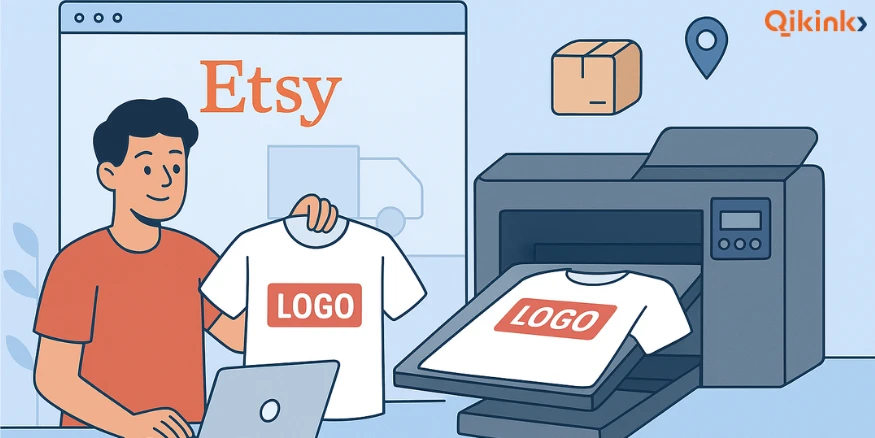
Assuming you are a designer planning to do a startup to sell your designs as print on demand by using Etsy. Your customer places orders in smaller quantities, such as two or three unique, designed t-shirts per day. In this case, the DTG printing works well and stands out to the minute details on your t-shirts and also has some advantages like,
- Lower production run, but can print your design perfectly. You can even print realistic photographs and illustrations, that can catch the eye of the audience.
- It eliminates the need for a warehouse or inventory, and you don’t have to spend money on it as a startup. You only print when an order is placed.
- Platforms like Qikink uses DTG printing machines, allowing them to manage your printing, packaging, and shipping. So, you won’t require any inventory or machines either.
Customers will have access to eco-friendly and soft-feel printed garments, as well as the option to test new design types, such as anime, cartoons, names, or text printing, without any upfront investment. For a start-up print-on-demand seller on Etsy, DTG will be the best option to serve your business. Once your design gains reach and starts receiving mass-bulk orders, you can transition to screen printing.
Local Events Merchandiser
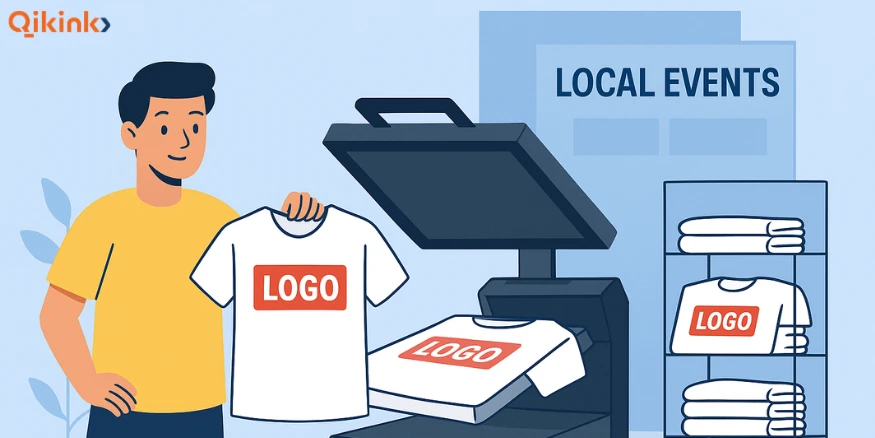
After having a production site for garments for a few months, you may receive an order of T-shirts in hundreds of counts for promotional wear, featuring their sponsored logo on the front and back, from a local event manager. In this case, screen printing is the right choice due to its ability to handle bulk production runs. A few other points, which also prove that the screen printing method shines here, are,
- For a mass production run of around 500 t-shirts, with the same logo, this screen printing process requires only a few initial setups. Later on, you can print your t-shirts and complete the printing within a single day.
- Because of its vibrant feel and long-lasting nature, customers can wear it repeatedly and will be satisfied with your product.
- By receiving similar bulk orders, you can start earning with just initial setups, having storage, and can make more profit.
With its cost-effectiveness, speed, durability, and mass production capabilities, screen printing can bring you enormous opportunities, resulting in increased production value and, consequently, higher profit margins.
Note: Screen Printing vs DTG vs Heat Transfer
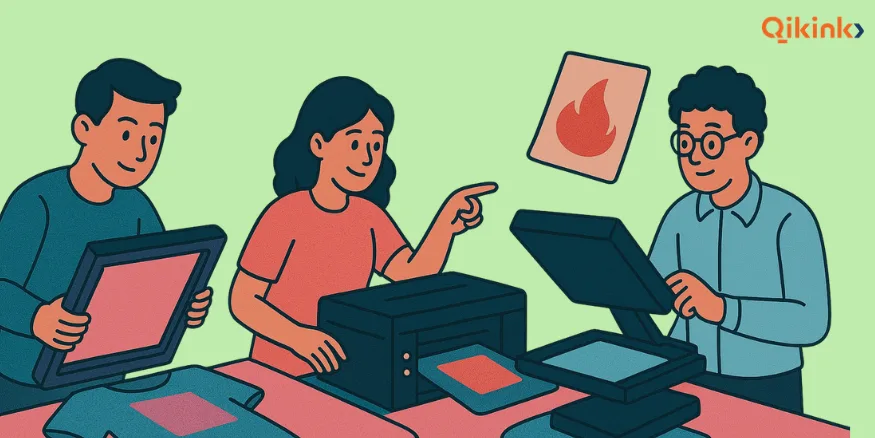
When debating the merits of printing machines with DTG printing vs screen printing, a new comparison topic arises: Screen Printing vs. DTG vs. Heat Transfer. The Heat Transfer printing method, although less dominant compared to the others, plays a significant role in the custom apparel industry.
Heat transfer printing involves the process of transferring a design to a special medium, such as vinyl transfer paper, and using heat transfer from a heat press machine to transfer the design onto the fabric. There are a few variations of the Heat Transfer printing method, such as,
- The Vinyl Heat Transfer method utilises coloured vinyl sheets cut into designs, which are then applied to garments using a heat press machine.
- Sublimation involves transferring dye-based inks into polyester fabrics through heat, making it ideal for sportswear and polyester blends.
- Digital Heat Transfer printing uses a digitally printed film that is heat-pressed onto the t-shirts, allowing vibrant and detailed designs on various fabric types.
Those are the methods involved in Heat Transfer. However, you can see many start-up companies using this Heat Transfer printing method before moving into DTG. It could be more affordable for personalised branding, gifts, and budget-conscious small orders.
Future of T-Shirt Printing Business
In this modernized world, designing a T-shirt is not just pressing and printing. AI and digital integration have started taking over. Customers have begun to try Augmented Reality (AR) and mock-ups. Due to these accelerated technological advancements, e-commerce has already started to grow rapidly, leaving only the topic of screen printing, DTG, or heat transfer to discuss.
- Print on Demand (POD) platforms have started to dominate the T-shirt printing business with their printing methods, including DTG, Screen Printing, and Heat Transfer, and have become an easy way for content creators or entrepreneurs to become print on demand T-shirt sellers.
- DTG’s soft, vibrant feel, eco-friendly ink usage, and attention to detail will attract premium and luxury brands to use DTG as their primary printing method.
- The regional growth and demand for printed garments are increasing, particularly in bulk orders of t-shirts for various events, schools, or campaigns. This is where Screen printing is necessary and plays a phenomenal role in your business, bringing in huge orders.
- Nowadays, customers buying t-shirts are practising short-term usage and are ready to buy a new one, but they want it to be sustainable. The DTG and Heat Transfer printing methods are cle; however,et the demand for long-lasting merchandisremainsll alive, for which Screen Printing remains the top choice.
- There won’t be any shops in the future with just one printing machine; instead, all possible printing methods, such as DTG, Screen Printing, or Heat Transfer, could be utilised together in this growing business, as per the demands of the situation.
Being a creator or an entrepreneur, bringing creative and technology-related ideas into the garments, that could be well connected with the customers, will be a significant boost to develop and brand your market all over the region, by choosing the correct printing method, which perfectly suits your situation, which can change your fortunes in the T-shirt business.
Discover advanced techniques for printing T-shirts that will set your designs apart!

Final Thoughts
Choosing the right printing method for your T-shirt business is a crucial first step that requires thoughtful and careful consideration. The debate between DTG, Screen Printing, and Heat Transfer is not just about comparing technologies; it’s about selecting the method that truly fits your business needs and goals. The best choice is the one that is practical, adaptable, and works best for your situation. Here’s a quick recap of the key points to keep in mind:
- When you plan for accuracy and details, with enough short runs, DTG is the best choice.
- For bulk orders of merchandise related to events or campaigns, Screen Printing offers cost-effective and long production run values.
- If you haven’t yet begun a project in this business, consider choosing the Heat Transfer printing method.
Understanding the strengths of each one will give you a clear idea of how to move forward in this business world. The future of T-shirt printing is leaning towards flexibility, sustainability, and quick fulfilment. The most successful brands will be those that know how to combine these printing methods effectively.
Ready to start your T-shirt printing business? Thinking about an inventory or the cash upfront investment as an entrepreneur or a content creator? India’s best print-on-demand platform, Qikink, helps with your custom printing needs, with over 50,000 sq. feet of factory space. They handle various printing techniques, including Heat Transfer, DTG, Screen Printing, and other methods.
Start testing your designs on T-shirts today by choosing Qikink as your partner in the customized garment printing industry.
Read More
Frequently Asked Questions
What lasts longer, DTG or screen print?
Screen printing is generally more durable and lasts longer. Its thick plastisol inks can withstand stretching and multiple washes far better than DTG prints, which may fade sooner, especially on synthetic fabrics and with improper care.
What are the downsides of DTG printing?
DTG printing is slower and more expensive for bulk runs, primarily limited to cotton fabrics, and requires pretreatment and machine maintenance. Additionally, its prints are less long-lasting compared to screen printing.
Which method is best for t-shirt printing?
DTG suits small runs, complex or photographic designs, and is ideal for print-on-demand. Screen printing is better suited for large quantities, simpler designs, and highly durable prints. Heat transfer is helpful for small personalization jobs, but it is less durable.
Why is DTG so expensive?
Costs arise from the use of expensive water-based inks, pretreatment, longer print times per shirt, and ongoing maintenance, making DTG more costly per unit compared to bulk screen printing.
Is DTG or screen printing cheaper?
DTG is more cost-effective for small, one-off orders, while screen printing offers better pricing and margins for large batch orders once setup costs are covered.



